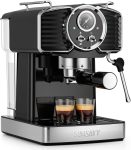
Black Friday Espresso Machine 20 Bar, Professional Espresso Machine Review – Oemiu
Unlocking Barista-Level Coffee at Home: A Deep Dive into 20 Bar Espresso Machines & Black Friday Deals
The aroma of freshly brewed espresso is a symphony of rich, roasted notes that awakens the senses and promises a delightful experience. For coffee aficionados, the quest for the perfect cup often leads to exploring the world of espresso machines. Specifically, 20 bar espresso machines have garnered significant attention for their ability to extract robust flavor and create a luscious crema. As Black Friday approaches, the prospect of acquiring a professional espresso machine at a discounted price becomes incredibly appealing. This guide delves into the nuances of 20 bar espresso machines, exploring their features, benefits, and what to consider before investing in one, especially during the Black Friday sales frenzy. It’s designed to help you navigate the choices and ensure you find the best professional espresso machine to elevate your home coffee ritual.
Understanding the Science of Espresso: Why 20 Bars Matter
Espresso, at its heart, is a science. The extraction process hinges on pressure, temperature, and time. The “bar” unit measures pressure, and in the context of espresso machines, it indicates the force applied to the coffee grounds during extraction. While the ideal pressure for espresso extraction is often cited as 9 bars, many machines advertise 15 or 20 bars. This doesn’t necessarily mean they are applying 20 bars of pressure at the group head (where the water meets the coffee). Instead, they use a 20-bar pump to ensure that even with resistance from the coffee grounds, the pressure at the group head remains optimal for a quality extraction.
The rationale behind using higher bar pumps is to compensate for inconsistencies in coffee grind size, tamping pressure, and even the coffee blend itself. A more powerful pump can overcome these variables to a certain extent, ensuring a more consistent and flavorful espresso shot. However, it’s crucial to note that a high bar rating alone doesn’t guarantee exceptional espresso. Other factors, such as temperature stability, pre-infusion capabilities, and the quality of the components, play equally vital roles. A machine with excellent temperature control and a pre-infusion function, even with a slightly lower bar rating, might produce a superior shot compared to a machine with just a high bar rating.
Consider the scenario of using pre-ground coffee. Pre-ground coffee often has a coarser and less consistent grind than freshly ground beans. A 20-bar pump might be better equipped to extract a decent shot from pre-ground coffee compared to a 15-bar pump. Similarly, if your tamping technique is not perfectly consistent, the higher pressure can help compensate for slight variations. However, ultimately, the best results are achieved by pairing a high-quality machine with freshly ground beans and a consistent tamping technique. In essence, the 20-bar rating offers a buffer, a safety net to ensure decent extraction even under less-than-ideal conditions. It’s about providing consistent power behind the water flow so that your espresso is always good, even when you’re running short on time or patience.
Essential Features to Look For in a Professional Espresso Machine
Beyond the 20-bar pressure rating, several other features contribute to the overall performance and usability of a professional espresso machine. These features directly impact the quality of your espresso, the ease of use of the machine, and its longevity. Understanding these features will empower you to make a more informed decision when browsing Black Friday deals.
* **Temperature Control:** Consistent temperature is paramount for optimal espresso extraction. Look for machines with PID (Proportional-Integral-Derivative) controllers. These controllers precisely regulate the water temperature, ensuring that it remains stable throughout the brewing process. Temperature stability prevents bitter or sour shots and allows for consistent flavor extraction.
* **Pre-infusion:** This feature gently saturates the coffee grounds with water before full pressure is applied. Pre-infusion allows the grounds to bloom, releasing trapped gases and ensuring a more even extraction. The result is a richer, more flavorful espresso with a smoother crema.
* **Portafilter:** The portafilter holds the coffee grounds during extraction. Heavier, more robust portafilters retain heat better, contributing to temperature stability. Look for portafilters made from brass or stainless steel, as these materials are durable and heat-conductive.
* **Steam Wand:** If you enjoy milk-based espresso drinks like lattes and cappuccinos, a powerful and versatile steam wand is essential. Look for wands with multiple holes for creating microfoam, the velvety texture that elevates milk-based drinks. Articulating wands that swivel in multiple directions offer greater flexibility and ease of use.
* **Water Tank Capacity:** Consider the water tank capacity based on your daily coffee consumption. A larger tank is convenient if you brew multiple shots or frequently entertain guests.
* **Ease of Cleaning:** Espresso machines require regular cleaning to maintain optimal performance and prevent the buildup of mineral deposits. Look for machines with removable water tanks, drip trays, and other components that are easy to access and clean. Some machines also offer automatic cleaning cycles.
* **Durability and Build Quality:** Invest in a machine built with high-quality materials that can withstand daily use. Stainless steel is a popular choice for its durability, resistance to corrosion, and sleek appearance.
| Feature | Importance | Description |
|---|---|---|
| Temperature Control (PID) | High | Ensures stable water temperature for consistent espresso. |
| Pre-infusion | High | Saturates grounds for even extraction and richer flavor. |
| Portafilter Material | Medium | Heavy portafilters (brass/stainless steel) retain heat. |
| Steam Wand Power | Medium | Powerful wand with multiple holes for microfoam creation. |
| Water Tank Capacity | Medium | Depends on daily consumption needs. |
| Ease of Cleaning | High | Removable parts and automatic cleaning cycles are a plus. |
| Durability | High | Stainless steel construction ensures longevity. |
Navigating the Black Friday Espresso Machine Landscape: What to Expect
Black Friday is a prime opportunity to snag a high-quality espresso machine at a significantly reduced price. However, navigating the sheer volume of deals and marketing hype can be overwhelming. Here’s what to expect and how to prepare for a successful Black Friday espresso machine hunt.
First, expect fierce competition. Popular models and brands are likely to sell out quickly, so it’s crucial to be prepared and act fast. Many retailers offer early Black Friday deals or pre-Black Friday sales, so start your research and monitoring prices well in advance. Keep an eye on major retailers like Seller, Best Buy, Williams Sonoma, and specialty coffee equipment suppliers. Also, check the manufacturer’s website, because sometimes they offer competitive discounts directly.
Second, be wary of “doorbuster” deals. These are often deeply discounted items that are available in limited quantities, usually for a very short period. While the price might be tempting, make sure the machine meets your needs and quality expectations. Don’t get caught up in the hype and buy something you’ll regret later. Read online reviews and compare specifications before committing to a purchase.
Third, understand the return policies and warranties offered by the retailer and the manufacturer. This is especially important for espresso machines, as they are complex appliances that may require maintenance or repairs. Ensure you have adequate protection in case of defects or malfunctions. Most legitimate retailers will offer a 30-day return policy, but be sure to check before you buy.
Fourth, consider purchasing a refurbished machine. Refurbished espresso machines are often returned items that have been inspected, repaired, and restored to like-new condition. They are typically sold at a lower price than new machines and can be a great way to save money without sacrificing quality. However, make sure the refurbished machine comes with a warranty.
Finally, remember that Black Friday isn’t just about price. Consider the overall value of the machine, including its features, performance, durability, and ease of use. Don’t be afraid to spend a little more on a higher-quality machine that will last longer and provide a better espresso experience. Focus on long-term value instead of short-term savings. Consider a professional-grade espresso machine as an investment in your daily ritual, not just an impulse buy. And most importantly, do your research *before* Black Friday hits.
Real-World Examples and Comparisons: Choosing the Right Machine for You
To illustrate the practical application of these features and considerations, let’s examine a few hypothetical scenarios.
* **The Busy Professional:** Sarah is a busy lawyer who needs a quick and reliable espresso fix in the morning before heading to court. She values speed and convenience but also wants a good-quality espresso. A 20 bar espresso machine with a built-in grinder and automatic milk frother would be ideal for her. She would prioritize ease of use and cleaning, even if it meant sacrificing some control over the brewing process.
* **The Home Barista Enthusiast:** John is a coffee enthusiast who enjoys experimenting with different beans and brewing techniques. He wants a machine that offers precise control over temperature, pressure, and extraction time. A semi-automatic or manual espresso machine with a PID controller and a high-quality portafilter would be a good fit for him. He would prioritize performance and customization options over convenience.
* **The Family-Oriented Coffee Lover:** Emily enjoys making lattes and cappuccinos for her family on weekends. She needs a machine that is easy to use, durable, and can handle multiple shots in quick succession. A 20 bar espresso machine with a large water tank, a powerful steam wand, and a user-friendly interface would be a good choice for her. She would prioritize reliability and ease of maintenance.
Let’s compare three hypothetical espresso machines:
| Feature | Machine A (Budget-Friendly) | Machine B (Mid-Range) | Machine C (Professional-Grade) |
|---|---|---|---|
| Pressure | 15 Bar | 20 Bar | 20 Bar |
| Temperature Control | Thermostat | PID Controller | Dual PID Controllers |
| Pre-infusion | No | Yes | Yes, Programmable |
| Portafilter | Aluminum | Stainless Steel | Brass, Commercial-Grade |
| Steam Wand | Basic | Articulating, Single Hole | Articulating, Multi-Hole |
| Price (Estimated Black Friday) | $150 | $400 | $800 |
| Ideal For | Beginners, occasional use | Enthusiasts, daily use | Serious home baristas, frequent use |
Machine A is a basic, budget-friendly option suitable for beginners or those who only occasionally make espresso. Machine B offers a significant upgrade in terms of performance and features, making it a good choice for enthusiasts who want a better espresso experience. Machine C is a professional-grade machine designed for serious home baristas who demand the highest level of control and performance.
By carefully considering your needs, preferences, and budget, you can narrow down your options and find the perfect espresso machine to elevate your coffee experience. Remember to read reviews, compare specifications, and take advantage of Black Friday deals to get the best possible value. A great *espresso maker* can be a game changer, especially if you’re tired of spending tons of money at local coffee shops every day.
Maintaining Your Investment: Ensuring Longevity of Your Espresso Machine
Once you’ve acquired your dream espresso machine, proper maintenance is crucial for ensuring its longevity and optimal performance. Regular cleaning and descaling are essential for preventing the buildup of mineral deposits, which can clog the machine and affect its ability to extract espresso properly.
* **Daily Cleaning:** After each use, wipe down the machine’s exterior, clean the portafilter, and empty the drip tray. Backflush the group head with water to remove coffee grounds.
* **Weekly Cleaning:** Disassemble and clean the portafilter components, including the basket and spout. Clean the steam wand with a damp cloth and purge it to remove milk residue.
* **Monthly Descaling:** Descale the machine according to the manufacturer’s instructions. Descaling removes mineral buildup that can affect the machine’s performance and lifespan. Use a descaling solution specifically designed for espresso machines. Avoid using vinegar, as it can damage the machine’s internal components.
* **Water Quality:** Use filtered water to prevent mineral buildup and improve the taste of your espresso. Avoid using tap water, which can contain chlorine and other impurities that can affect the machine’s performance and flavor.
* **Professional Servicing:** Consider having your machine professionally serviced every year or two, depending on usage. A professional technician can inspect the machine, clean internal components, and replace any worn parts.
By following these maintenance tips, you can ensure that your espresso machine remains in top condition for years to come. Treat your machine as an investment, and it will reward you with countless cups of delicious espresso. It is important to remember this when selecting your *premium espresso machine*. Making sure it lasts is just as important as the quality of espresso that it is capable of producing.
Frequently Asked Questions (FAQ)
What is the difference between a 15 bar and a 20 bar espresso machine?
The primary difference lies in the pump’s pressure capacity. A 15-bar machine’s pump can generate up to 15 bars of pressure, while a 20-bar machine’s pump can generate up to 20 bars. However, it’s important to remember that the ideal pressure for espresso extraction is around 9 bars. The higher pressure in a 20-bar machine doesn’t necessarily mean it’s applying 20 bars at the group head. Instead, the higher-pressure pump can compensate for inconsistencies in grind size, tamping pressure, and coffee blend, ensuring consistent extraction even under less-than-ideal conditions. A 20-bar machine might be slightly more forgiving if you’re using pre-ground coffee or are still perfecting your tamping technique. The extra pressure helps to ensure proper extraction regardless of these minor inconsistencies. In the end, both can make good espresso, but the 20-bar pump offers a little more room for error.
Is a more expensive espresso machine always better?
Not always. Price isn’t always a reliable indicator of quality. While more expensive machines often offer more features, better build quality, and superior performance, a less expensive machine can still produce excellent espresso if it has the essential features and is properly maintained. Consider your needs, budget, and coffee preferences. A simple, well-built machine with a PID controller and a decent portafilter might be a better choice than an overpriced machine with unnecessary bells and whistles. Before splurging on a high-end model, read reviews, compare specifications, and consider whether the added features justify the extra cost. A solid mid-range machine might offer the best balance of performance, features, and value. It really comes down to matching the machine to your specific needs, rather than simply chasing the most expensive option. Also, remember to assess how frequently you plan to use the device and how long you expect it to last.
What is the ideal grind size for espresso?
The ideal grind size for espresso is a fine grind, similar to table salt. The coffee grounds should be uniform in size to ensure even extraction. If the grind is too coarse, the water will flow through too quickly, resulting in a weak, sour espresso. If the grind is too fine, the water will struggle to flow through, resulting in a bitter, over-extracted espresso. Experiment with different grind sizes until you find the sweet spot that produces a balanced and flavorful shot. A good quality burr grinder is essential for achieving a consistent and precise grind.
Is a burr grinder better than a blade grinder?
Yes, a burr grinder is significantly better than a blade grinder for espresso. Burr grinders use two rotating abrasive surfaces to crush the coffee beans into uniform particles, while blade grinders chop the beans unevenly, creating a mixture of fine powder and coarse chunks. The uniform grind produced by a burr grinder ensures even extraction and optimal flavor, while the uneven grind from a blade grinder leads to inconsistent extraction and a muddy, bitter taste. Investing in a good burr grinder is essential for achieving consistently high-quality espresso.
How important is tamping for espresso?
Tamping is crucial for creating a consistent and even puck of coffee grounds in the portafilter. Proper tamping compresses the grounds, creating resistance that allows the water to extract the flavors and aromas evenly. Inconsistent tamping can lead to channeling, where water flows through certain areas of the puck more easily than others, resulting in uneven extraction and a weak, sour espresso. Use a calibrated tamper and apply consistent pressure (around 30 pounds) to ensure a properly compacted puck. Consistent pressure and a level tamp are key to achieving optimal results.
What is the best way to clean an espresso machine?
Regular cleaning is essential for maintaining optimal performance and preventing the buildup of mineral deposits. Backflush the group head with water after each use. Disassemble and clean the portafilter components weekly. Descale the machine monthly using a descaling solution specifically designed for espresso machines. Wipe down the machine’s exterior and clean the steam wand regularly. Use filtered water to prevent mineral buildup. Refer to the manufacturer’s instructions for specific cleaning recommendations. A clean *espresso maker* is a happy espresso maker and will last you much longer.
How do I know if my espresso machine needs descaling?
Several signs indicate that your espresso machine needs descaling. The machine may produce weaker espresso, take longer to heat up, or make unusual noises. You may also notice white, chalky deposits around the water tank or other components. Refer to your machine’s manual for instructions on descaling, or to your machine’s display (if so equipped). Regular descaling is important for preventing mineral buildup and ensuring optimal performance. Generally, you should descale your machine every 1-3 months, depending on your water hardness and frequency of use.
What kind of water should I use in my espresso machine?
Always use filtered water in your espresso machine. Tap water often contains chlorine, minerals, and other impurities that can affect the taste of your espresso and contribute to mineral buildup in the machine. Filtered water removes these impurities, resulting in better-tasting espresso and a longer lifespan for your machine. You can use a water filter pitcher or install a water filter on your water line. Avoid using distilled water, as it lacks the minerals necessary for proper espresso extraction.
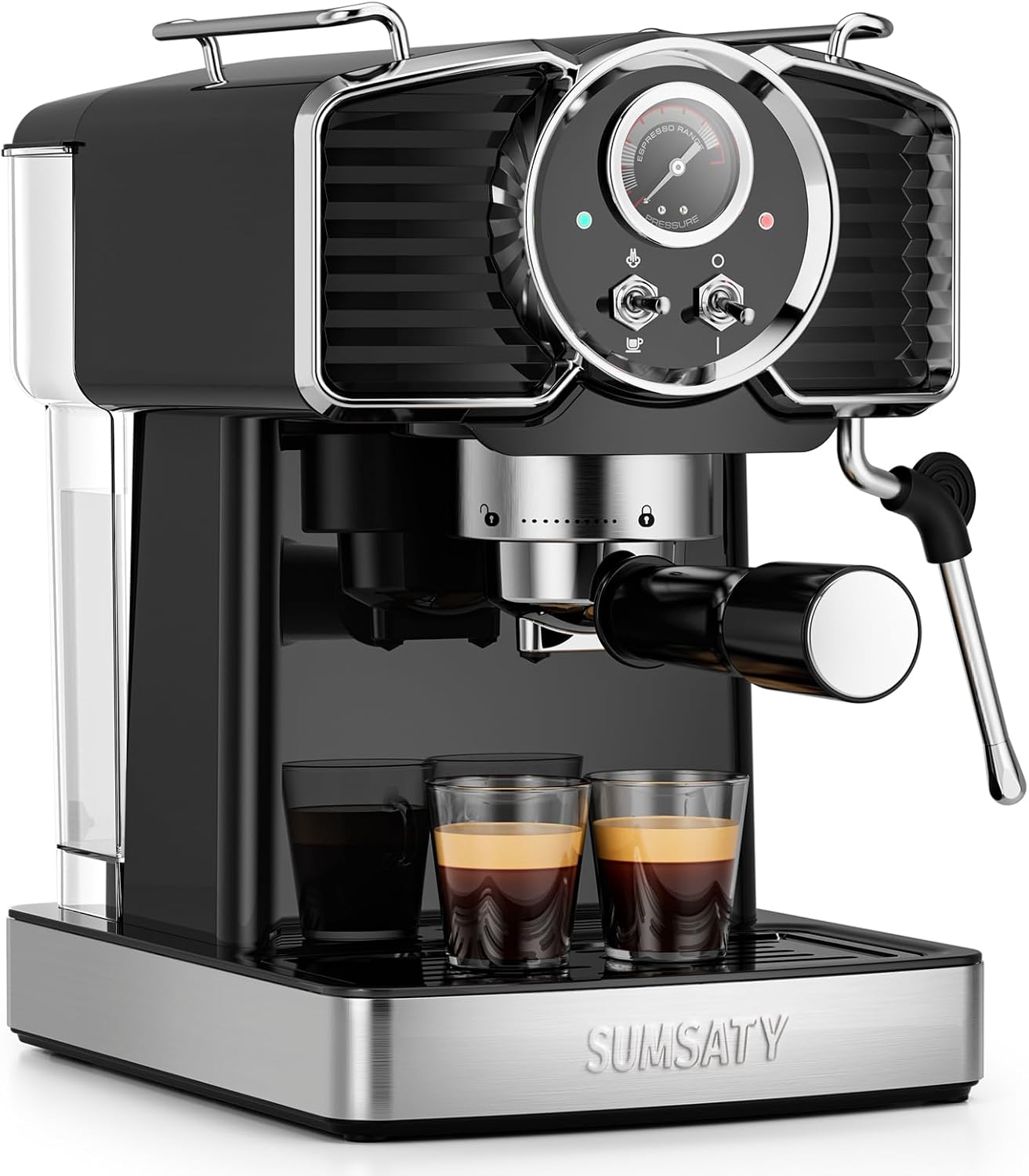
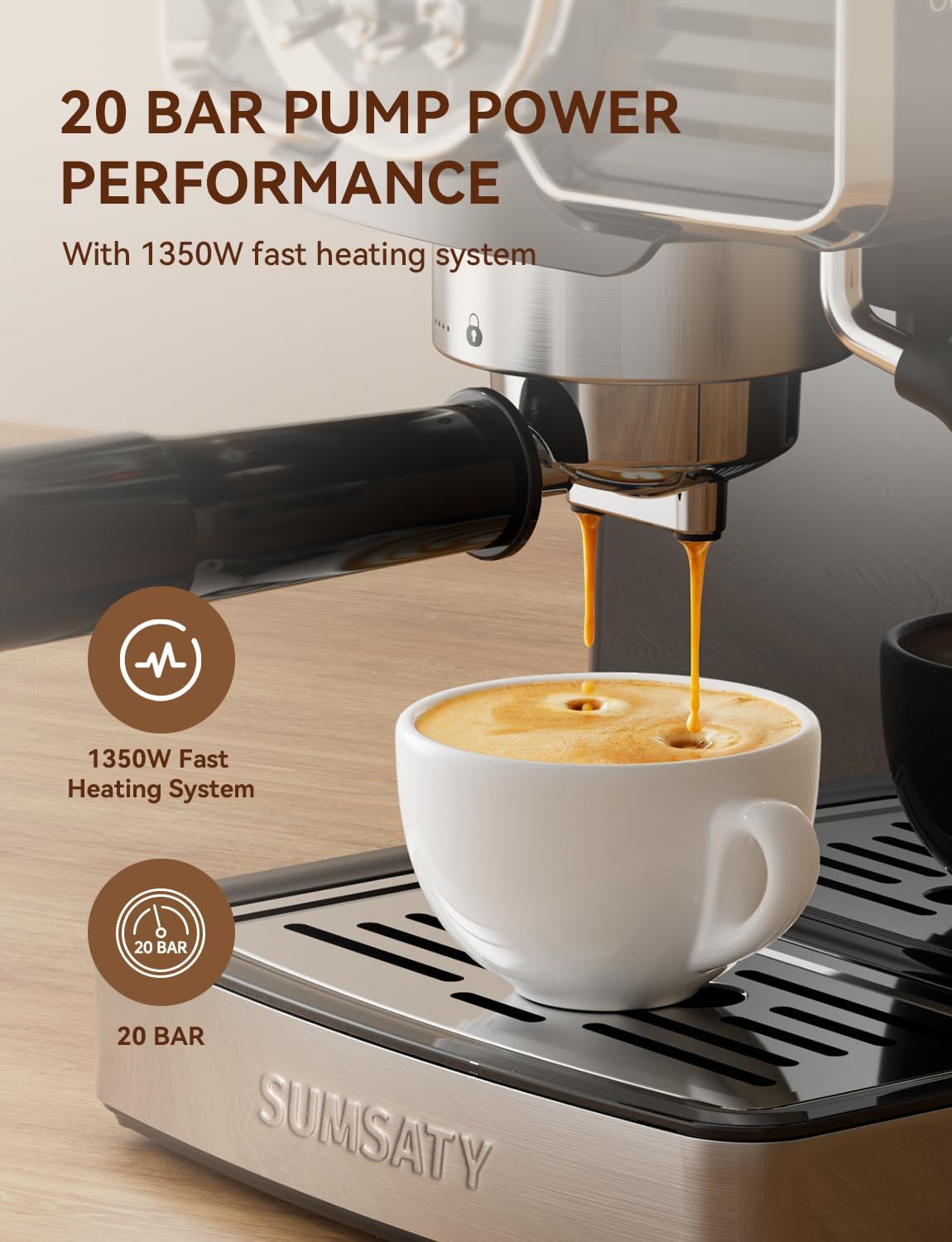
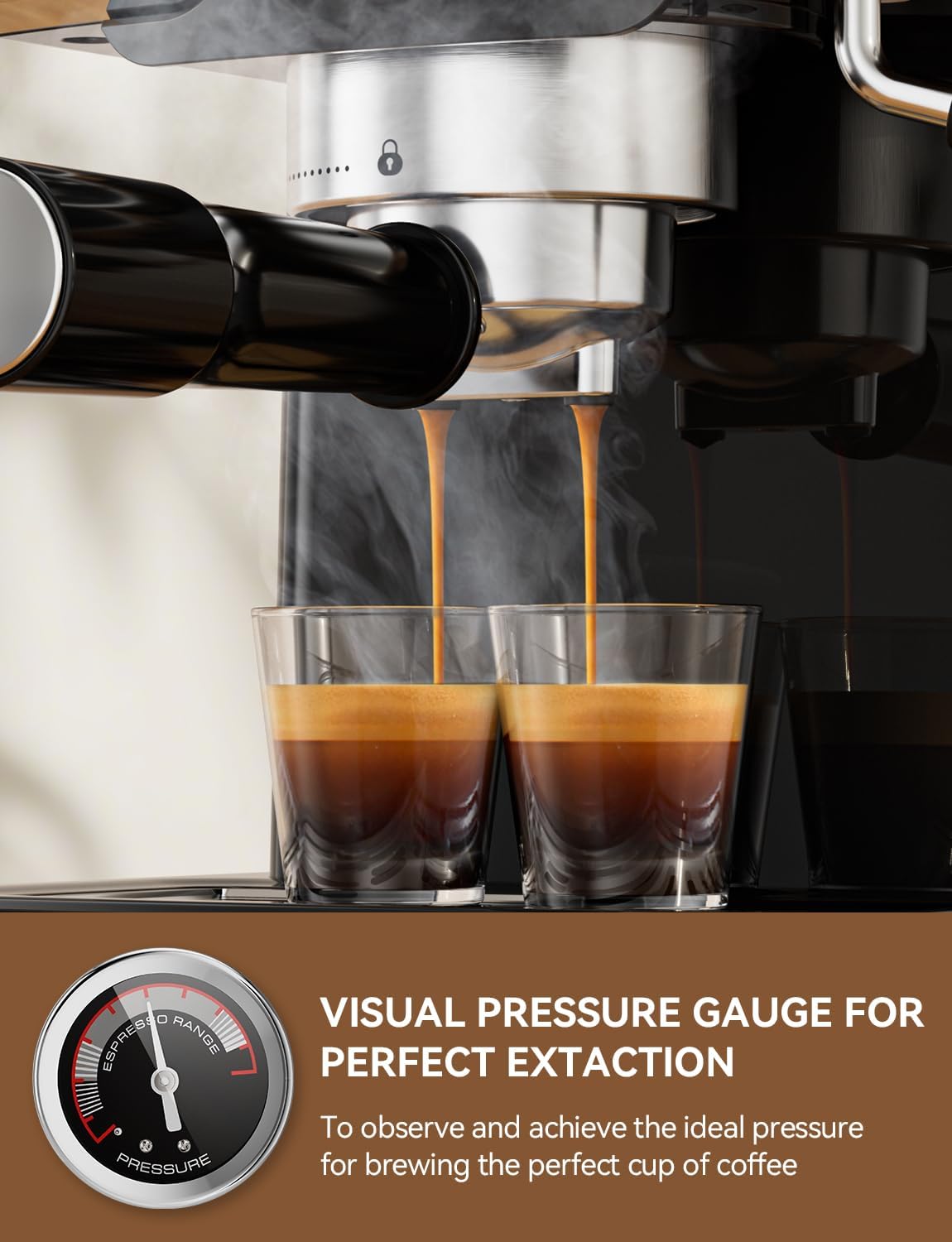
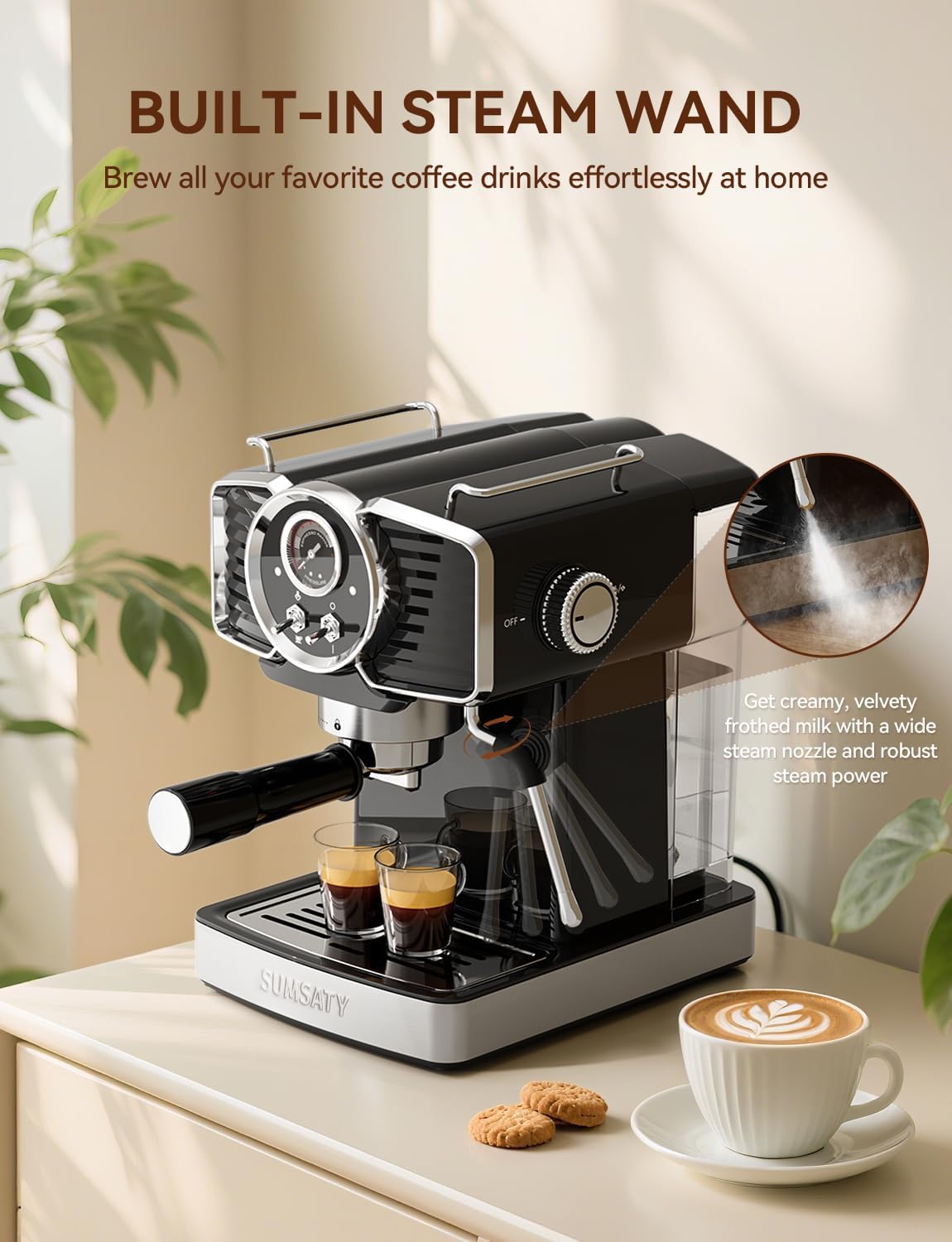
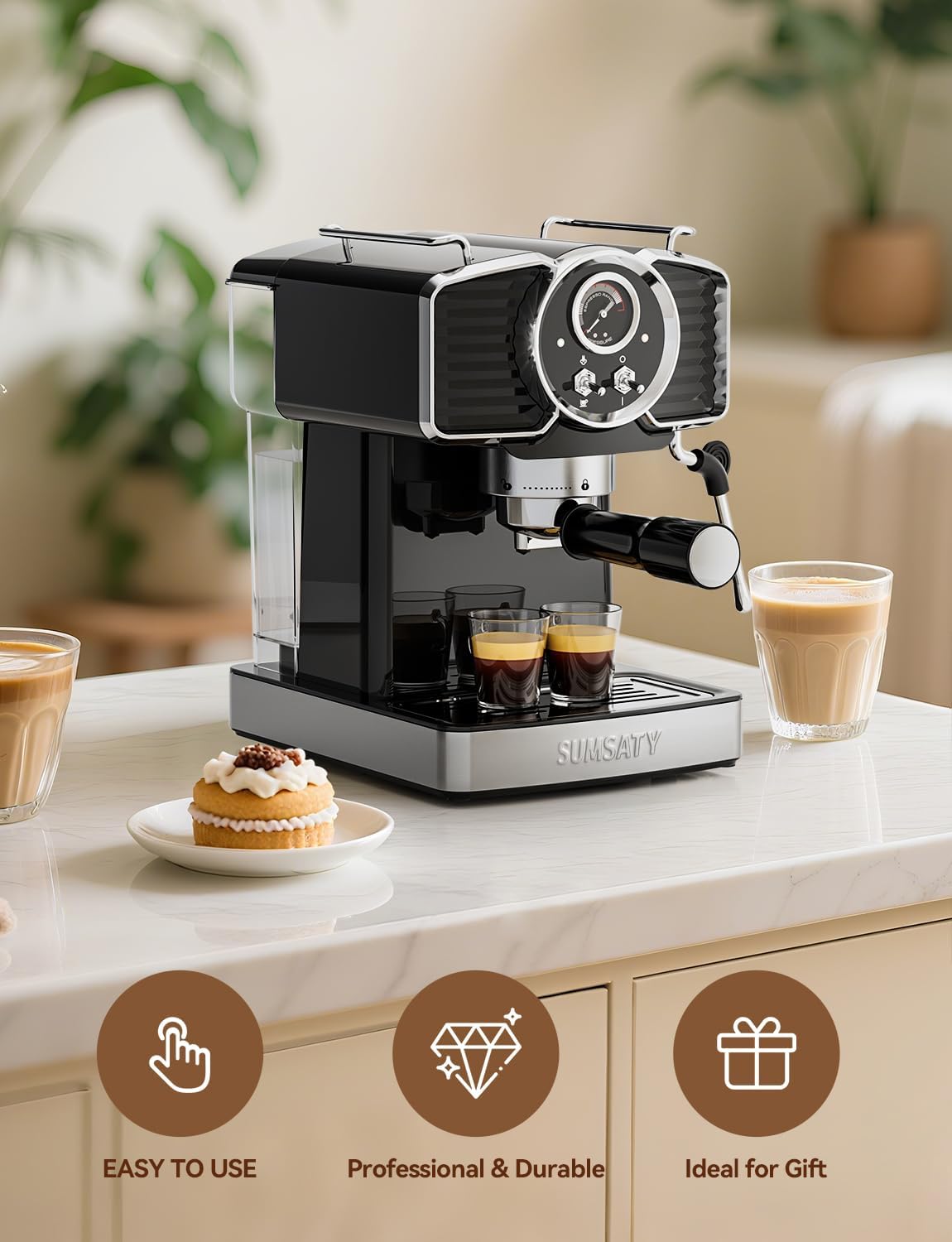
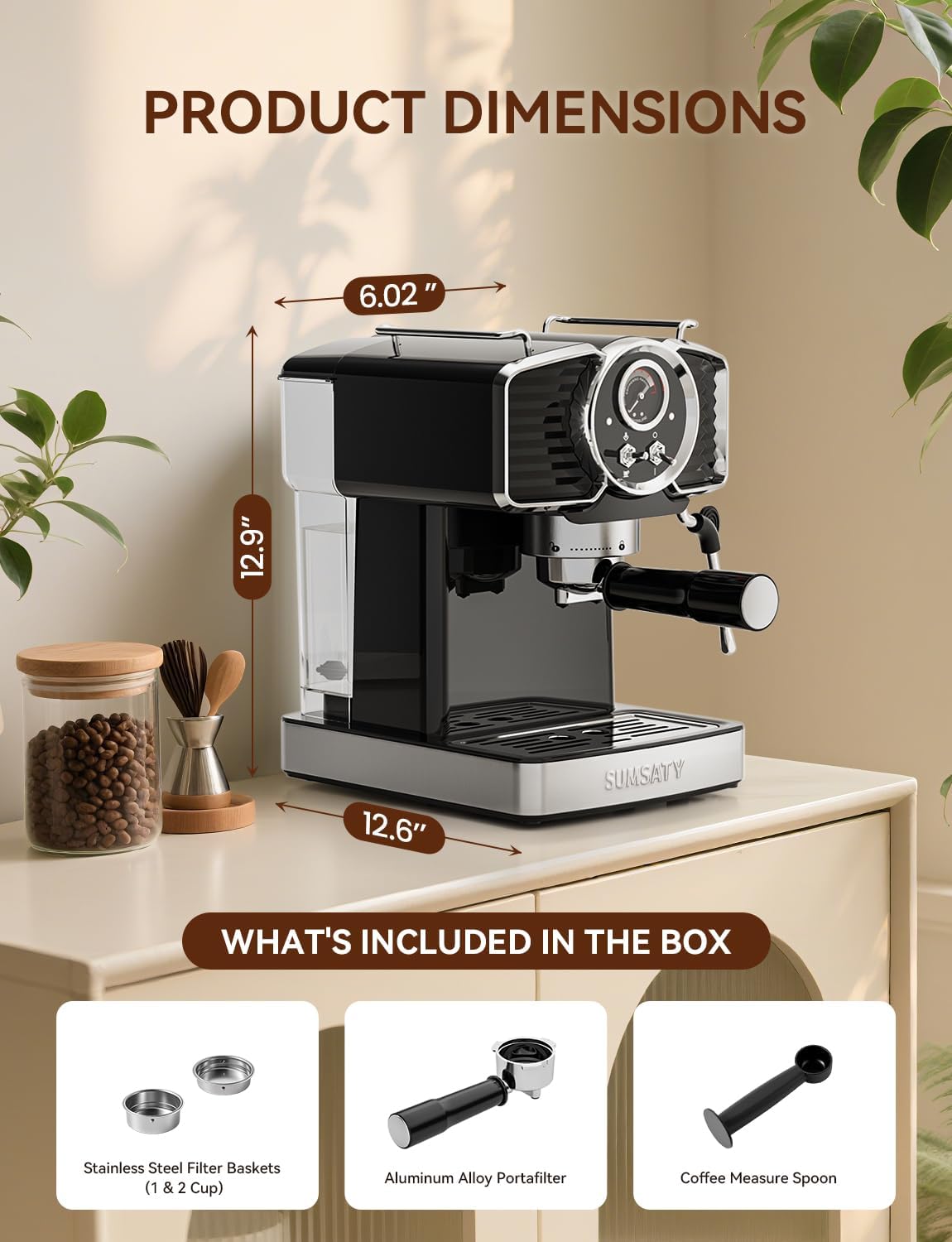
Price: $155.88 - $159.99
(as of Sep 08, 2025 12:55:48 UTC – Details)




